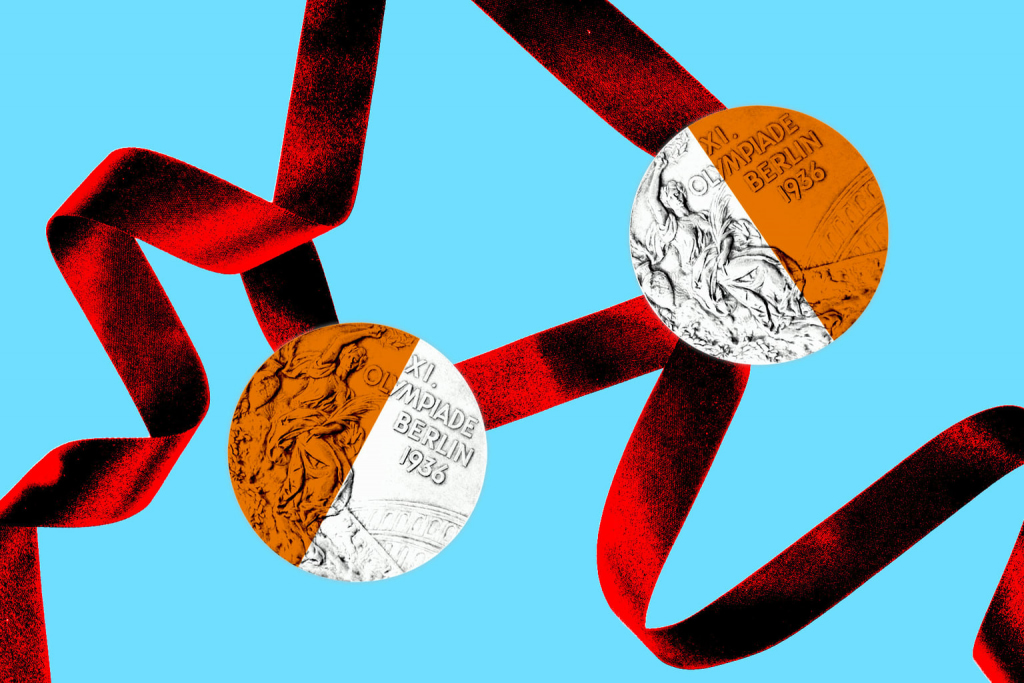The 1936 Summer Olympics in Berlin was very controversial (and we know what that feels like). Adolf Hitler personally saw the event as a way to promote the Nazi party’s idea of white supremacy. Many countries debated boycotting the Games not only on moral grounds but also because there were serious concerns about the safety of Jewish athletes. Even so, a couple of inspiring moments managed to shine through. African American sprinter Jesse Owens won four gold medals and two Japanese athletes created the so-called “Medals of Friendship.”
Pole Vault at the 1936 Olympics
85 years ago, 25,000 spectators watched American Earle Meadows clear the impressive height of 4.35m in the pole vault. It was enough to earn him a gold medal at the Berlin Olympics. Three athletes competed for second place: Bill Sefton from the United States along with Japan’s Shuhei Nishida and Sueo Oe. Sefton failed to clear the jump-off height while the two Japanese men succeeded. However, the final standings were yet to be decided as Nishida and Oe achieved the exact same result. The judges wanted them to jump again for the silver but Nishida and Oe flat out refused.
Do you know the story behind the ‘medals of friendship’? 🎥https://t.co/oA6a8zGP0z #friendship #Olympic pic.twitter.com/J3VIzx15zg
— Athlete365 (@Athlete365) June 11, 2017
The pair weren’t just world-class athletes, they were also close personal friends. So, out of respect for each other’s skills, they asked the Olympic organizers if they could share the silver medal. This time, it was the judges who flat-out refused. The Japanese team was told to decide between themselves who should go home with which medal.
Behind the Dilemma
After deliberating, it was decided that Nishida would take the silver. There are many theories as to how they came to this decision. The most popular one says that since Oe cleared the jump-off height of 4.25m on his second attempt while Nishida did it the first time, the former got the bronze medal. Although, some sources also claim that Nishida’s age contributed to the decision. As Oe was four years younger, he showed reverence to his “senpai” (someone in a higher hierarchical position, usually due to their age). Yet other sources say that Keio University student Oe agreed to the bronze because, as the younger athlete, he had more chance of taking gold at the next Olympics, so he might as well let Nishida have the silver medal. However, all of these theories stand at odds with what the two men did next.
Clearly not happy with the official results of the competition, they decided to take matters into their own hands and fix it.
Creating the Medals of Friendship
Upon their return to Japan, Nishida and Oe went to a jeweler and asked him to cut both medals in half. Then they had the silver and bronze halves welded together to create two prizes that they felt better reflected their real accomplishments. A hybrid silver-bronze medal for each athlete. The two medals eventually became known as “the medals of friendship.”
友情のメダルを見ることできました。Do you know about this story??@Tokyo2020 pic.twitter.com/rFBwWEYhJK
— Koji Murofushi PhD 室伏広治 (@KojiMurofushi) November 27, 2017
That doesn’t mean they weren’t competitive. Nishida and Oe were planning a rematch at the 1940 Olympics, which was supposed to take place in Tokyo before getting moved to Helsinki and ultimately being canceled altogether due to the outbreak of World War II. The next opportunity for the two athletes to compete against each other at an Olympics would have been in 1952, but sadly Oe was killed during the war. Nishida ultimately lived to be 87, dying of heart failure in 1997. In 2005, the Japan Association of Athletics Federations (JAAF), of which Nishida was the honorary vice chairman, donated his medal of friendship to Waseda University, where he studied. It remains there to this day.
It’s important to remember that competition is not the only goal of the Olympics. It also stands for peace and friendship. This story embodies exactly that.
If you are following the Tokyo 2020 Olympics, make sure to check out:









